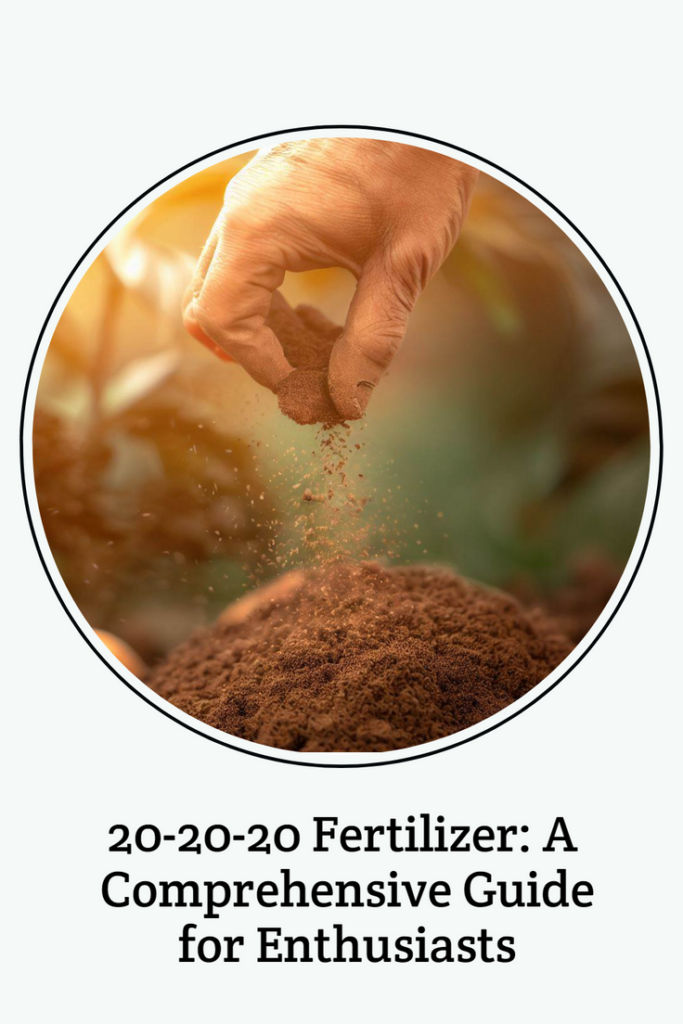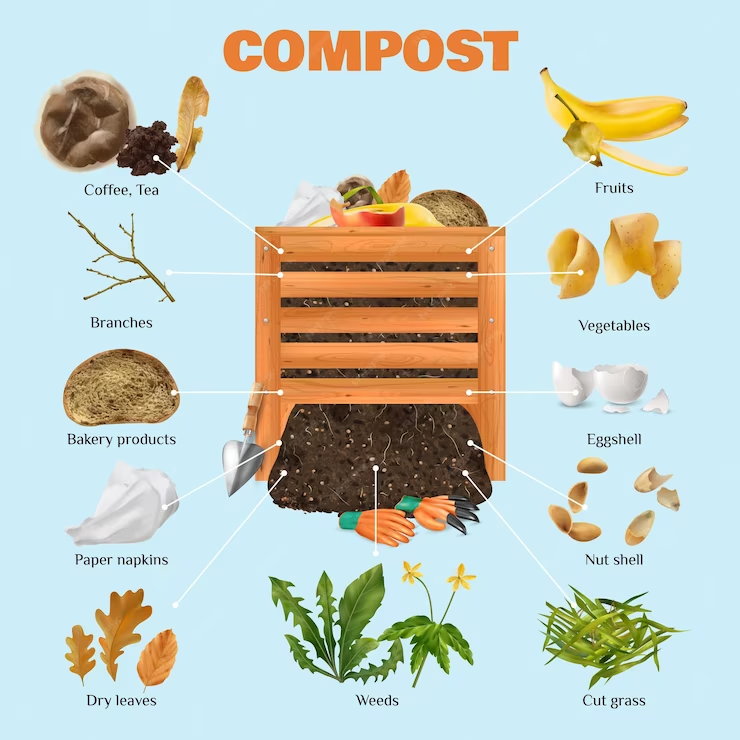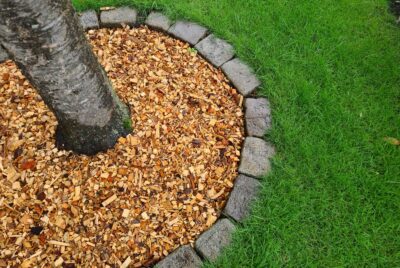20-20-20 Fertilizer: A Comprehensive Guide for Enthusiasts
Deprecated: The PSR-0 `Requests_...` class names in the Requests library are deprecated. Switch to the PSR-4 `WpOrg\Requests\...` class names at your earliest convenience. in /home/littlegr/public_html/wp-includes/class-requests.php on line 24
What is 20-20-20 fertilizer? Understanding Composition
When it comes to fertilizers, 20-20-20 is a popular formulation that is widely used by gardeners and horticulturists. It is a balanced fertilizer that contains a specific ratio of essential nutrients necessary for plant growth. Let’s delve into the composition of 20-20-20 fertilizer and understand why it is beneficial for plants.
NPK Ratio
The numbers in the 20-20-20 formulation represent the ratio of three key nutrients: nitrogen (N), phosphorus (P), and potassium (K), also known as NPK. Each of these nutrients plays a vital role in supporting different aspects of plant development.
Nitrogen (N) is responsible for promoting leaf and stem growth. It is an essential component of chlorophyll, the pigment responsible for photosynthesis. Nitrogen-rich fertilizers encourage lush, green foliage and help plants establish a strong foundation.
Phosphorus (P) is crucial for root development, flowering, and fruiting. It aids in energy transfer within the plant and promotes the growth of healthy root systems. Phosphorus-rich fertilizers are particularly beneficial during the early stages of plant growth, as they help establish robust root structures.
Potassium (K) is essential for overall plant health and resilience. It enhances the plant’s ability to withstand environmental stresses such as drought, diseases, and pests. Potassium also plays a role in promoting flower formation, fruit development, and the overall quality of crops.
The balanced ratio of 20-20-20 ensures that plants receive equal amounts of nitrogen, phosphorus, and potassium, providing them with a well-rounded nutrient profile for optimal growth and development.
Micro and Macro Nutrients
In addition to the NPK ratio, 20-20-20 fertilizer also contains a range of micro and macro nutrients that are necessary for plant health. These include essential elements such as calcium, magnesium, iron, zinc, copper, manganese, and boron, among others.
Micro nutrients are required in smaller quantities compared to the primary NPK nutrients, but they are equally important for proper plant growth. They contribute to various physiological processes within the plant, including enzyme activation, photosynthesis, and the synthesis of proteins and hormones.
Macro nutrients, on the other hand, are required in larger amounts and are essential for the overall development and productivity of plants. They provide the necessary building blocks for plant structures and play a crucial role in metabolic processes.
The inclusion of micro and macro nutrients in 20-20-20 fertilizer ensures that plants receive a comprehensive range of essential elements, supporting their overall health and vitality.
Why should you use 20-20-20 fertilizer?
1: Promotes Balanced Growth
When it comes to nurturing plants, achieving balanced growth is essential for their overall health and productivity. 20-20-20 fertilizer is an excellent choice for achieving this balance and providing plants with the nutrients they need. Let’s explore the specific reasons why you should consider using 20-20-20 fertilizer in your gardening endeavors.
2: Enhanced Root Development
One of the primary benefits of using 20-20-20 fertilizer is its positive impact on root development. The balanced composition of this fertilizer provides plants with an adequate supply of essential nutrients, including nitrogen, phosphorus, and potassium. These nutrients work together to support the growth of strong, healthy roots.
A well-developed root system allows plants to absorb water and nutrients efficiently from the soil. With enhanced root development, plants can establish themselves more effectively, leading to improved overall growth and resilience. Whether you’re growing vegetables, flowers, or trees, robust root systems are crucial for their long-term health and survival.
3: Improved Leaf and Stem Growth
Another advantage of using 20-20-20 fertilizer is its ability to promote lush leaf and stem growth. Nitrogen, one of the primary components of this fertilizer, plays a vital role in stimulating leaf and stem development. Adequate nitrogen levels encourage the production of chlorophyll, the green pigment responsible for photosynthesis. As a result, plants receiving 20-20-20 fertilizer exhibit vibrant and healthy foliage.
Healthy leaves are essential for efficient photosynthesis, which fuels the plant’s energy production. With an ample supply of energy, plants can allocate resources towards growth and development. Robust stems provide structural support and facilitate the transportation of water, nutrients, and sugars throughout the plant.
4: Increased Flower and Fruit Production
For gardeners looking to enhance flower and fruit production, 20-20-20 fertilizer can be a valuable tool. The balanced nutrients in this fertilizer formulation contribute to the development of blossoms and the subsequent formation of fruits.
Phosphorus, in particular, is essential for flowering and fruiting. By using 20-20-20 fertilizer, you provide plants with an adequate supply of phosphorus, which promotes robust flower bud formation and enhances the quality and quantity of fruits.
Potassium, another key component of 20-20-20 fertilizer, is involved in the synthesis of sugars and carbohydrates, which are crucial for the development of flavorful and nutritious fruits. It also supports the plant’s ability to resist diseases and pests, ensuring that the fruits reach their full potential.
When should you use 20-20-20 fertilizer?
Seedling Stage
Proper nutrition during the early stages of a plant’s life is crucial for establishing a strong foundation. The seedling stage is when young plants are most vulnerable and require extra care. Using 20-20-20 fertilizer during this stage can provide them with the necessary nutrients to support healthy growth.
During the seedling stage, plants primarily focus on developing their root systems and establishing themselves in the soil. The balanced composition of 20-20-20 fertilizer, with its optimal levels of nitrogen, phosphorus, and potassium, helps young plants develop robust roots. This, in turn, enables them to absorb water and nutrients efficiently from the soil, promoting overall vigor and resilience.
When applying 20-20-20 fertilizer to seedlings, it’s important to use a diluted solution. Start by mixing the fertilizer according to the package instructions, and then apply it gently around the base of the seedlings. This will ensure that the nutrients are readily available to support their early growth.
Vegetative Growth Phase
Once the seedlings have established themselves and entered the vegetative growth phase, they require a steady supply of nutrients to support the development of foliage and stems. This is another ideal time to use 20-20-20 fertilizer.
During the vegetative growth phase, plants focus on leaf and stem development. The balanced NPK ratio of 20-20-20 fertilizer provides an adequate supply of nitrogen, which is essential for promoting lush, green foliage. Nitrogen supports the production of chlorophyll, which enables plants to carry out photosynthesis and convert sunlight into energy.
Applying 20-20-20 fertilizer during the vegetative growth phase helps maintain a healthy balance of nutrients, ensuring that plants have the resources they need to grow vigorously. This stage is particularly important for plants that are grown for their foliage, such as leafy greens or ornamental plants prized for their lush appearance.
Blooming and Fruit-Bearing Stage
As plants transition into the blooming and fruit-bearing stage, their nutritional requirements shift. At this stage, the emphasis is on flower formation, fruit development, and overall productivity. Using 20-20-20 fertilizer during this period can provide the necessary nutrients to support these processes.
Applying 20-20-20 fertilizer during the blooming and fruit-bearing stage helps ensure that plants have access to the nutrients needed for successful flower and fruit production. Be mindful of the specific requirements of different plants and adjust the frequency and dosage of fertilizer application accordingly.
How to use 20-20-20 fertilizer effectively?
Measuring the Right Amount
Using the correct amount of 20-20-20 fertilizer is essential to ensure effective and balanced nutrient uptake by your plants. It’s important to follow the recommended dosage guidelines provided on the fertilizer packaging. These guidelines usually indicate the amount of fertilizer to be applied based on the size of your garden or the specific plant you are fertilizing.
To determine the right amount of fertilizer, consider factors such as the plant’s nutritional needs, the soil condition, and the growth stage of the plant. Using too little fertilizer may result in nutrient deficiencies, while excessive amounts can lead to fertilizer burn or nutrient imbalances.
Dilution and Mixing
Once you have determined the appropriate amount of 20-20-20 fertilizer to use, it’s crucial to dilute and mix it properly. This step ensures even distribution of nutrients and prevents the risk of over-fertilizing specific areas.
To dilute the fertilizer, follow the instructions on the packaging. Usually, this involves mixing a specific amount of fertilizer with water. A common ratio is one tablespoon of fertilizer per gallon of water, but be sure to check the label for precise instructions.
When mixing the fertilizer, use a watering can or a sprayer that allows for uniform application. Stir or shake the mixture well to ensure that the fertilizer is thoroughly dissolved in the water.

Application Methods
There are various application methods for using 20-20-20 fertilizer effectively, depending on your specific needs and the type of plants you are fertilizing.
For potted plants or small garden areas, you can use the watering can to apply the diluted fertilizer directly to the soil around the plants. Apply the fertilizer evenly, ensuring that it reaches the root zone.
For larger garden areas, a garden sprayer or a hose-end sprayer can be used to apply the diluted fertilizer. This method provides broader coverage and makes it easier to fertilize a larger area efficiently.
It’s important to avoid applying fertilizer directly onto the foliage, as this can cause leaf burn. Aim to apply the fertilizer at the base of the plants, where the roots can readily absorb the nutrients.
Timing of Application
Timing is crucial when it comes to using 20-20-20 fertilizer effectively. The frequency of application will depend on the specific needs of your plants and their growth stage.
During the growing season, it’s generally recommended to apply the fertilizer every two to four weeks to ensure a consistent supply of nutrients. However, be mindful of the specific requirements of different plants, as some may have different nutritional needs or may benefit from alternate fertilization schedules.
It’s important to start fertilizing your plants after they have become established and are actively growing. Applying fertilizer too early or during dormant periods may not yield optimal results.
Additionally, avoid fertilizing during extreme weather conditions, such as hot temperatures or drought. Applying fertilizer when the soil is dry can lead to fertilizer burn, as the concentrated nutrients may harm the roots. Instead, water the soil thoroughly before and after fertilization to ensure proper nutrient uptake.
By measuring the right amount, diluting and mixing properly, using appropriate application methods, and timing the application correctly, you can maximize the effectiveness of 20-20-20 fertilizer and provide your plants with the nutrients they need for healthy growth.
Remember to always refer to the specific instructions provided by the fertilizer manufacturer, as different brands may have slightly different guidelines for application.
Organic alternatives to 20-20-20 fertilizer, and the amount to add
When it comes to fertilizing your plants, organic alternatives can be a great option for those who prefer natural and sustainable gardening practices. These alternatives provide essential nutrients to your plants while enriching the soil with organic matter. Let’s explore some effective organic alternatives to 20-20-20 fertilizer and the recommended amounts to add.
Easiest Option: Compost
Compost is often referred to as “black gold” in gardening circles due to its numerous benefits. It is a rich, dark, crumbly material created from decomposed organic matter. Compost adds valuable nutrients to the soil and improves its structure, moisture retention, and overall fertility.
To use compost as an alternative to 20-20-20 fertilizer, spread a layer of compost around the base of your plants. Aim for a thickness of about 1 to 2 inches (2.5 to 5 cm). You can also mix compost into the soil before planting to improve its nutrient content and enhance microbial activity.
Byproduct of Aquaponics: Fish Emulsion
Fish emulsion is a popular organic fertilizer derived from fish waste. It is a concentrated liquid fertilizer that provides a balanced blend of essential nutrients, including nitrogen, phosphorus, and potassium, along with trace elements.
To use fish emulsion as an alternative to 20-20-20 fertilizer, dilute it according to the instructions provided on the packaging. Typically, a dilution ratio of 1 tablespoon of fish emulsion per gallon of water is recommended. Apply the diluted solution around the base of the plants, ensuring thorough coverage of the root zone.
Requires More Effort: Bone Meal
Bone meal is a natural fertilizer made from ground animal bones. It is a slow-release fertilizer that is high in phosphorus, making it particularly beneficial for promoting root development and flower production.
To use bone meal as an alternative to 20-20-20 fertilizer, apply it directly to the soil before planting or incorporate it into the planting hole. The recommended amount varies depending on the specific plants you are fertilizing. As a general guideline, you can apply 1 to 3 tablespoons of bone meal per square foot (9 to 27 grams per square meter) of planting area. Work the bone meal into the top few inches of soil.
Requires Most Effort: Blood Meal
Blood meal is a nitrogen-rich organic fertilizer made from dried animal blood. It is a fast-acting fertilizer that provides an immediate boost of nitrogen, which supports vigorous vegetative growth.
To use blood meal as an alternative to 20-20-20 fertilizer, sprinkle a thin layer of blood meal around the base of your plants, avoiding direct contact with the foliage. The recommended amount varies depending on the specific plants and their nitrogen requirements. As a general guideline, you can apply 1 to 2 tablespoons of blood meal per square foot (9 to 18 grams per square meter) of planting area. Lightly work the blood meal into the topsoil and water thoroughly.
Not Readily Available: Seaweed Extract
Seaweed extract is derived from seaweed and is an excellent organic fertilizer that provides a wide range of essential nutrients, trace elements, and plant growth regulators. It promotes overall plant health, improves stress tolerance, and enhances nutrient uptake.
To use seaweed extract as an alternative to 20-20-20 fertilizer, dilute it according to the instructions on the packaging. Typically, a dilution ratio of 1 to 2 tablespoons of seaweed extract per gallon of water is recommended. Apply the diluted solution directly to the soil around the plants or use it as a foliar spray. Repeat the application every 2 to 4 weeks during the growing season.
Remember to always follow the specific instructions provided by the manufacturer of the organic fertilizers you choose to ensure the proper and safe application. Organic fertilizers may have different nutrient concentrations, so it’s important to adjust the amounts accordingly based on the specific needs of your plants.
FAQs
Q: What does 20-20-20 fertilizer mean?
A: The numbers in 20-20-20 fertilizer represent the ratio of three key nutrients: nitrogen (N), phosphorus (P), and potassium (K), also known as NPK. Each number indicates the percentage of the nutrient in the fertilizer. So, 20-20-20 fertilizer contains 20% nitrogen, 20% phosphorus, and 20% potassium.
Q: Is 20-20-20 fertilizer suitable for all types of plants?
A: 20-20-20 fertilizer is a versatile option that can be used for a wide range of plants. Its balanced nutrient composition makes it suitable for various types of plants, including flowering plants, vegetables, fruits, and ornamentals. However, it’s always recommended to consider the specific nutritional needs of different plants and adjust the fertilizer formulation accordingly.
Q: Can I use 20-20-20 fertilizer for potted plants?
A: Yes, 20-20-20 fertilizer can be used for potted plants. In fact, it is a popular choice for container gardening. When using 20-20-20 fertilizer for potted plants, it’s important to adjust the amount based on the size of the container and the specific needs of the plant. Follow the recommended dosage instructions provided on the fertilizer packaging and consider factors such as the plant’s growth stage and environmental conditions.
Q: How often should I apply 20-20-20 fertilizer?
A: The frequency of 20-20-20 fertilizer application depends on several factors, including the type of plants, growth stage, soil condition, and climate. As a general guideline, it’s recommended to apply 20-20-20 fertilizer every two to four weeks during the growing season. However, it’s important to monitor the plants’ response and adjust the frequency if necessary. Some plants may require less frequent applications, while others may benefit from more frequent feeding.
Q: Are organic alternatives as effective as 20-20-20 fertilizer?
A: Organic alternatives to 20-20-20 fertilizer can be highly effective in promoting plant growth and overall health. Organic fertilizers, such as compost, fish emulsion, bone meal, blood meal, and seaweed extract, provide a wide range of nutrients and organic matter that nourish the soil and support plant growth. While the nutrient release may be slower compared to synthetic fertilizers, organic alternatives offer long-term benefits by improving soil fertility, microbial activity, and nutrient availability. Additionally, they are environmentally friendly and contribute to sustainable gardening practices.




